Science
Is This Paper The End Of Freewill?
Aravindan Neelakandan
Jun 22, 2025, 07:30 AM | Updated Jun 25, 2025, 11:19 AM IST
Save & read from anywhere!
Bookmark stories for easy access on any device or the Swarajya app.
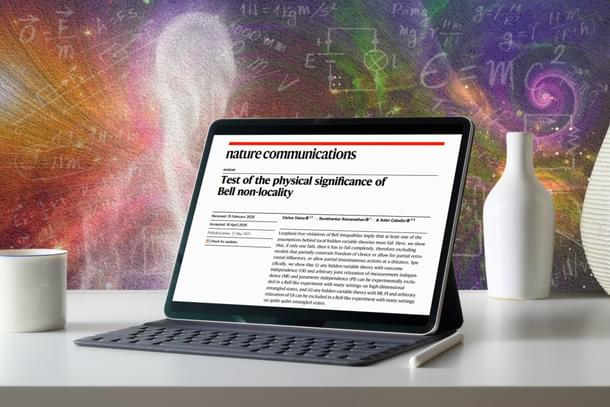
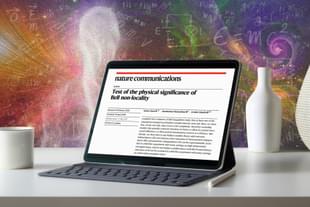
You are reading this sentence.
This means you decided to click the link. Was that choice truly your own, an act of free will? Or was it an inevitable outcome, determined by a cascade of events set in motion long before you were born?
For millennia, these questions were the domain of philosophers and theologians. Yet, for the past century, they have found a surprising and arguably more potent home in the strange world of quantum physics. At the heart of it lies a deep conflict between our intuitive understanding of reality and what experiments tell us is true.
A paper in the May 12, 2025, issue of Nature, titled ‘Test of the physical significance of Bell non-locality,’ might initially seem an odd place to search for answers. However, its implications are profound enough to challenge any worldview. The paper expands the question beyond the mere confirmation that our universe is ‘weird’ and non-local. It sharpens the quantum dilemma to an unprecedented degree by placing severe mathematical constraints on how reality can deviate from classical expectations. The central finding of the paper is a stark, ‘all or nothing’ ultimatum.
The story behind the Vieira et al. paper begins nearly a century ago, rooted in Albert Einstein's profound dissatisfaction with quantum mechanics. He argued that the theory, despite its successes, must be an incomplete description of reality. To formalize his objections, Einstein collaborated with physicists Boris Podolsky and Nathan Rosen. In a seminal 1935 paper, they questioned whether the quantum-mechanical description of physical reality could be considered complete. This challenge became famously known as the EPR Paradox.
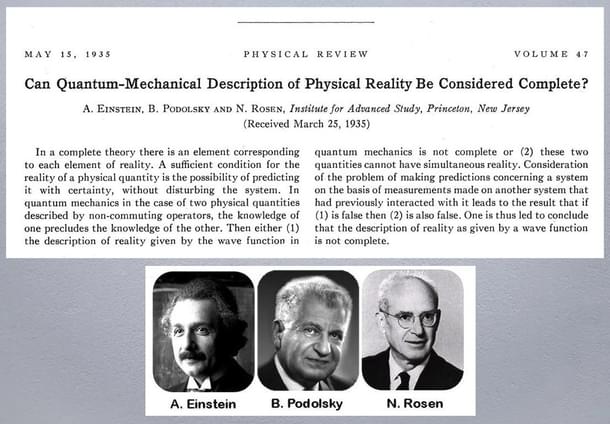
The paradox is based on entanglement linking two particles so that a measurement on one instantaneously influences the state of the other, regardless of distance, seemingly violating the principle of locality which forbids faster-than-light influence. This Einstein famously derided as ‘spooky action at a distance’ (spukhafte Fernwirkung). Einstein’s preferred alternative was ‘local realism’—the intuitive idea that objects have definite properties independent of observation (realism) and are only affected by their immediate surroundings (locality). He believed quantum theory was incomplete because it couldn't account for "hidden variables" that predetermined these properties.

For nearly thirty years, this remained a philosophical impasse. That changed forever in 1964 with the work of physicist John Stewart Bell. He devised a brilliant theoretical test—now known as Bell's theorem—that could distinguish between Einstein's hidden variables and the predictions of quantum mechanics. Bell turned this philosophical problem into a testable game.
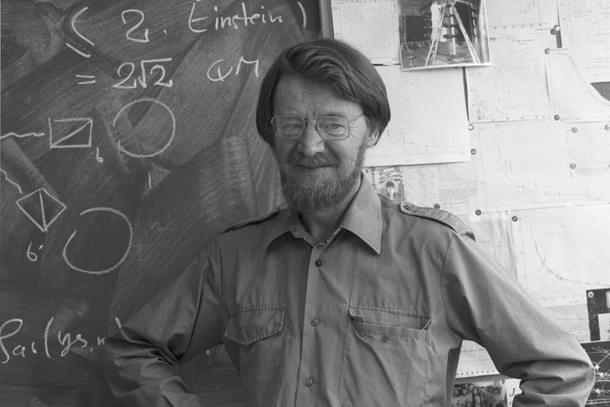
Alice and Bob each have a particle from a special pair, an entangled pair. They stand far apart, and on a countdown, they both measure a single quantum property of their particles. If they both perform the exact same measurement, their results are perfectly anti-correlated: when one’s spin is ‘up’, the other is ‘down’. This correlation is what puzzled Einstein. To avoid the ‘spookiness’, Einstein came with the solution that each particle has a pre-set 'instruction sheet' (hidden variables) determined from the moment it was created.
The results are therefore local to each particle, determined only by its internal instructions and the measurement being performed on it. Now comes the really interesting part. Instead of just one type of measurement (like a spin in one axis), imagine they can each choose to measure the spin in various axes. They randomly would pick a measurement for each round without knowing what the other person chose. According to Einstein's view, if each particle has pre-set properties (local variables), there is a strict limit to how well their results can match when measured. This limit is the famous 'Bell's Inequality'.
Within a few years of the formulation of Bell’s Theorem the experimental results started favouring quantum spookiness over the hidden variables. In 1978 discussing the implications of experiments physicists John Clauser and Abner Shimony observed:
The conclusions are philosophically startling: either one must totally abandon the realistic philosophy of most working scientists, or dramatically revise our concept of space-time.
Over the past five decades, increasingly sophisticated ‘Bell tests’ have been performed. A landmark experiment was conducted in 2015 by a team at Delft University of Technology led by Ronald Hanson. They entangled two electron spins in diamond crystals located in separate labs 1.3 kilometres apart. This distance ensured that no signal could travel between the particles, even at the speed of light, during the measurement process. The results were unequivocal: Bell's inequality was consistently violated, confirming the ‘spooky’ predictions of quantum mechanics.
The concept of ‘local hidden-variable theories,’ or local realism, rests on a set of common-sense assumptions about the world. As formalized in the Vieira et al. paper and other foundational literature, these are primarily three independent assumptions.
Locality (or Parameter Independence): The principle of no 'spooky action at a distance.' Alice’s measurement cannot instantly affect Bob’s distant particle.
Freedom of Choice (or Measurement Independence): The belief that Alice and Bob are free to choose how they measure their particles. Their choice isn't secretly dictated by the same "instruction sheet" that governs the particles.
Separability (or Outcome Independence): The idea that once you know a particle's entire instruction sheet, its outcome is its own and isn't statistically linked to the other particle's outcome.
The central question has been which of these pillars of our classical worldview must fall. Which one was the faulty assumption? Or can we manage a kind of middle ground? Maybe reality is just a little bit spooky? Or are our choices mostly free, but slightly constrained?
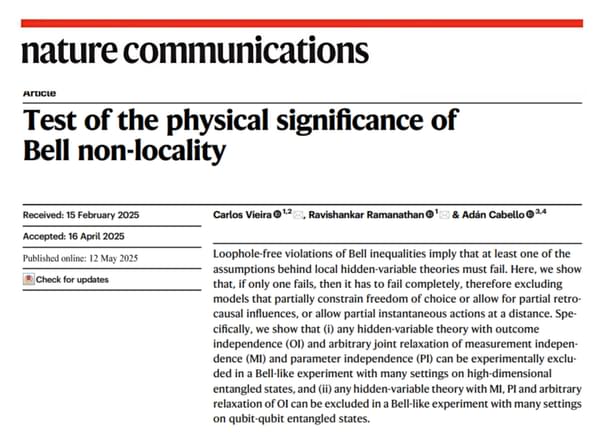
Vieira et al., paper further sharpens this by asking: could an assumption fail only partially?
The paper through two cleverly devised theoretical experiments, proves that such a middle ground is impossible.
In the first theoretical experiment, Alice and Bob's experiment is scaled up dramatically. Instead of a single measurement, they perform a whole set of N measurements all at once on a complex, high-dimensional entangled state. Think of it as a single test composed of many parallel parts.The authors calculated the absolute best result Alice and Bob could get for a specific correlation if their reality was a compromise—for instance, if there was a tiny amount of 'spooky action' (violating Locality) or if their measurement choices were just slightly influenced by the particles' past (violating 'Free Choice').
In any such 'partial' or 'compromise' reality, the result for this correlation can get close to perfect, but it can never actually reach 100%. Quantum mechanics, however, predicts that as you increase N (the number of parallel parts in the experiment), the result for this correlation gets closer and closer to a perfect 100%. For a large enough experiment, the quantum prediction surpasses the absolute limit for any compromise theory. This proves that no middle ground is possible. Reality cannot be 'mostly local or choices 'mostly free.' If either of those assumptions fails, it must fail completely.
In the second thought experiment, Alice and Bob use a simpler two-qubit entangled state, but they are given a very large number of different measurement options, which they can make on their particles. This is designed to test the assumption that the two particles are fundamentally separate entities (an assumption called Outcome Independence).
The authors showed that if the particles are ‘mostly separate’ but still have some residual link beyond their initial programming (a partial violation of separateness), there is a strict limit on the probability of a specific outcome. That probability can never reach 50%.
On the other hand, if QM underlies the reality then that predicts that as you give Alice and Bob more and more measurement options, the probability of getting that specific outcome gets closer and closer to 50%.
So the Conclusion?
By using enough measurement settings, the quantum prediction can exceed the limit allowed for any theory where separateness is only partially broken. Therefore, this assumption also faces an all-or-nothing ultimatum: either the particles are separate in the way we've always assumed, or they are part of a single, indivisible holistic system.
There is no in-between.
Assuming any one of the assumptions is completely wrong then what does it mean for a revised worldview? The paper actually provides a Trilemma.
1. Superdeterminism: If we insist on locality (PI) and separability (OI), then Measurement Independence (MI) must fail completely. This implies a universe where an experimenter's free choice is an illusion, perfectly correlated with the particle's state through a shared causal history tracing back to the universe's origin.
2. Complete Non-Locality: If we preserve free choice (i.e. measurement independence, MI) and outcome separability (outcome independence, OI), then locality (parameter independence, PI) must fail completely. Spooky action at a distance becomes a pervasive and fundamental feature of reality.
3. Radical Holism: If we assume locality (PI) and free choice (MI), then Outcome Independence (OI) must fail completely. This suggests a deeply holistically connected universe where entangled systems are so interconnected they are not truly separate events.
From the Trilemma we arrive at basically two ontologies for the universe. The paper represents a significant moment in the philosophy of science, sharpening the implications of Bell's theorem into an ‘all-or-nothing’ ultimatum that dismantles any hope for a quasi-classical reality. The paper forces a choice between ontologies that are all, from a classical perspective, deeply strange.
The Superdeterministic Universe (i.e. Complete Violation of MI): This is the path taken if one sacrifices Measurement Independence to save locality (Parameter Independence and Observer Independence). In this view, the ‘freewill’ of the experimenter is the illusion. Every event in the universe, including the scientist's decision to orient a polariser one way rather than another, was determined by the initial conditions of the universe at the Big Bang. So the hidden variable is not a local property of the particle but a reflection of the state of the entire universe. The correlation between the experimenter's choice and the particle's state is not a result of ‘spooky action’, but a result of a shared, common cause deep in the cosmic past. As Bell himself described it, there is no need for a signal to travel from one particle to the other because ‘the universe, including particle A, already 'knows' what that measurement, and its outcome, will be.’
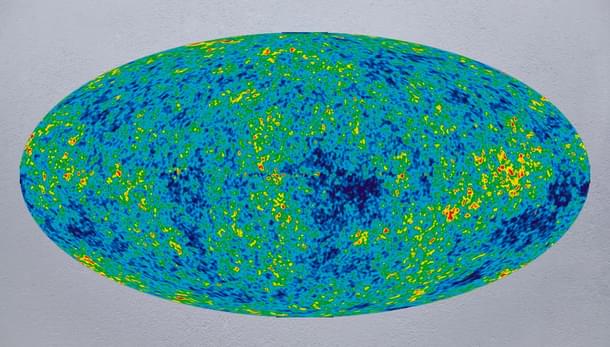
The superdeterminism, as mentioned earlier, arises from the initial conditions of the universe at the Big Bang. The modern cosmological narrative, eloquently described by the physicist Guido Tonelli, reframes the Big Bang not as an explosion of matter into a pre-existing void, but as a ‘spectacular metamorphosis’ from one state of vacuum to another, an event predicated on the principles of quantum mechanics and the peculiar nature of the vacuum it describes. When this vacuum metamorphosis is juxtaposed with the superdeterminism arising from the initial condition of the universe, where even an experimenter's ‘free choice’ is predetermined, then Tonelli’s spontaneous ‘metamorphosis’ of the vacuum could be reinterpreted not as chance, but as the inevitable first step in a superdeterministic cosmic script. This is a scenario that very nearly echoes that apocryphal comment attributed to Einstein (as having made to his assistant , Ernst Straus), that he wondered if God really had any choice in the creation of the universe.
The Non-Local Universe (which means Complete Violation of PI and/or OI): This is the path taken if one sacrifices locality to save the freedom of the experimenter's choice. In this view, reality itself is fundamentally non-local. The experimenter's choice is genuinely free -not determined by the particle's hidden state- but the consequence of that choice, or the outcome of the measurement, is not confined by the speed of light. A complete violation of PI implies that Alice's choice of setting has an instantaneous and total causal influence on Bob's outcome, and vice versa.
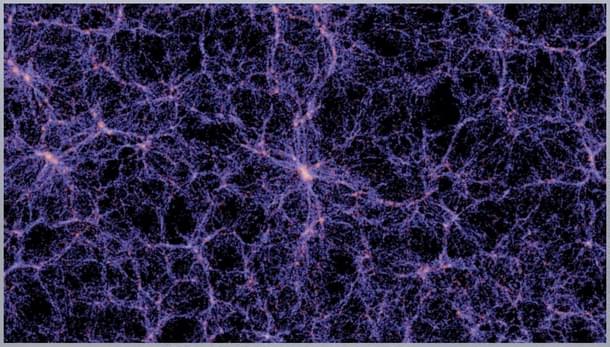
The ontology of a complete OI failure is one where the measurement events themselves are non-locally linked. It is as if the actualisation of a specific result on Alice's side is not an isolated event but is part of a single, larger, non-local event whose other end is the actualisation of the result on Bob's side. The correlation is not explained by the settings as in PI violations but arises from a direct, holistic connection between the realised outcomes. This suggests a form of non-locality that is rooted in the very structure of how events come into being.
Thus while OI violation is operationally distinct from PI violation, it shares with the latter scenario the radical implication of a universe where space-like separation does not imply causal independence.
Bohm's Implicate Order and Holographic Universe
One is here reminded of another similar model that became quite famous well beyond the domain of physics. It was David Bohm’s vision of the Universe with Implicate Order. His ‘holonic movement’ became an important model in many fields, from ecology to psychology and also an inspiration for art. Though both the non-local model of the universe arising from the PI-breakdown and OI-breakdown in Vieira et al., paper is similar to the Bohm’s non-local universe, there are crucial differences.
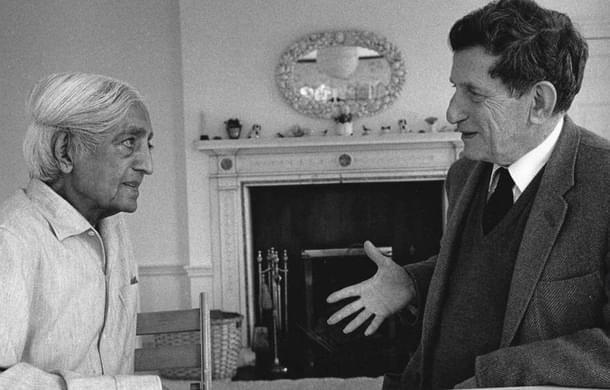
The philosophical form of Bohmian framework which became popular beyond physics, is explicitly holistic and anti-reductionist. In this the ‘parts’ of the universe namely the particles, fields, observers etc., are relatively stable, semi-autonomous ‘sub-totalities’ or abstractions that emerge from, and are sustained by, an underlying, undivided whole which is the ‘holomovement.’ In this view, non-locality is not a causal link between parts; it is a fundamental property of the whole that manifests in the behaviour of its apparent parts.
On the other hand, what Vieira paper presents is in its essence the traditional analytical method of science. Its primary goal is to isolate the false assumption in the conceptual machinery of local realism. It is the classical method of falsification and elimination, aiming to arrive at precise experiments to rule out classes of hidden-variable theories in order to corner nature into revealing its specific brand of non-local causality.
As Cabello, one of the authors, pointed out to ‘New Scientist’, the priority is to do the experiments and Ramanathan the second author too emphasised h how quantum computers may be helpful here because the question of relaxing some independence assumptions, or some parts of the computer influencing some of its other parts, cannot be avoided because of their compact design. It is a sophisticated continuation of the project to find the correct causal model of the world, even if that model must include strange, superluminal links.
The ‘complete exits’ framework of the paper, which posits that reality must abandon locality through one of three extreme causal structures: absolute superdeterminism, unmitigated action-at-a-distance, or direct outcome-to-outcome influence, all point to a dichotomy that has to be resolved – an apparent reality and a deeper reality that is fundamentally different from the apparent reality. What does this all mean for a human being?
The Implications Beyond Physics
The most direct philosophical consequence of this work is its powerful refutation of models that rely on a concept of ‘partial free will.’ In fact this is the middle ground. Many religions, particularly religions with monotheistic personal, transcendental creator God, posit that this God has an ethical benevolent commandment system for humans and the sin is because of the ‘partial free-will’ the humans have. British popular science weekly ‘New Scientist’ quotes one of the authors Cabello pointing out that ‘many religions resolve the conflict between the concept of an omniscient God and God’s commandment not to commit sin by assuming human beings have partial free will.’ However if ‘partial free will’ is eliminated then this resolution also breaks down.
Impact for Theistic Worldview
This is evident in the Biblical worldview, as developed through centuries of Christian theological contemplation upon a foundational tension. On one hand, it posits a God who is omniscient (all-knowing), omnipotent (all-powerful), and sovereign, meaning His will and decree govern all of creation and history. Christian Bible affirms that God knows ‘the end from the beginning’ (Isaiah 46:10) and ‘works out everything in conformity with the purpose of his will’ (Ephesians 1:11). This has led to theological positions that embrace a form of theological determinism, where God predestines all events, including who will be saved.
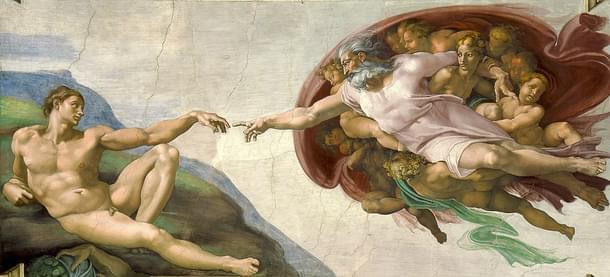
On the other hand, the Christian theology is equally insistent on the reality of human freedom and moral responsibility. Humans are created as moral agents, commanded to ‘choose life’ (Deuteronomy 30:19), and are held accountable for their actions. In fact the core concepts of Christianity including Original sin, repentance, love, and divine judgment become incoherent without the presupposition of a will that is genuinely free to choose between alternatives. This creates an apparent paradox: if God infallibly knows and ordains every future choice, in what sense can that choice be considered free? If human actions are predetermined, how can they be morally responsible?
A theological solution provided by great theologians like Thomas Aquinas, is to argue that God exists outside of time. As eternal and transcendental being all cosmic history is a single, simultaneous ‘now’. In this view, God's knowledge of a future event is not foreknowledge that determines the event, but rather direct vision of an event which for a human being with a temporal perspective isyet to occur. God knows what a person will freely choose because, in His eternity, but He does not cause the choice which in turn belongs to the freewill of the human being. Another theological approach is compatibilism, wherein free will and determinism are not mutually exclusive. An action is ‘free’ if it is voluntary and proceeds from one's own desires and character, even if those desires and character are themselves ultimately determined by God's decree. These frameworks represent sophisticated efforts to navigate the conceptual space between absolute determinism and unconstrained freedom. It is exactly this space that is rendered untenable by Vieira et al. paper.
Advaita in Superdeterministic and Non-Local Universes
What about Advaita in the superdeterministic universe?
In a superdeterministic universe the temporal causation is an illusion. The Advaitic framework can contain and contextualise the superdeterministic picture as a potential description of the empirical realm (Vyavaharika), while maintaining that this entire realm is itself a projection onto the truly acausal Brahman. The concept of Maya then becomes a strong tool in the Vedantic toolkit. For Advaita Vedanta, the paper's finding creates no tension at all; in fact, it affirms the worldview's basic structure.
The Advaitic framework is explicitly designed to accommodate both poles of the dichotomy presented by the physics.
The comparison between the theistic and Advaitic worldviews should not be considered as a competitive analysis of their convergence with modern physics. It addresses a more profound challenge: the stability of our ethical frameworks, which have historically sought their authority in the ontological claims of religious worldviews.
When scientific progress appears to negate the core tenets of a worldview, the value system it supports is at risk of being reduced to mere social convention, losing its binding force. This is a critical issue, given that universal values such as empathy and selfless service—nurtured within these very worldviews—have proven essential for human survival and flourishing. Thus, it becomes essential to identify a worldview with an ontological foundation resilient enough to absorb the implications of profound scientific discovery, thereby securing a durable grounding for the ethics our species requires.
This is where the Advaita Vedanta paradigm, viewed through a more integrated lens, offers a compelling alternative. It posits two orders of reality: the empirical (Vyāvahārika) and the absolute (Paramārthika). The empirical world is a determined realm governed by the inexorable law of karma, where our sense of being a separate, freely-willing self (the jīva) is a construct of a creative illusion (Māyā). This is in a way a philosophy of hard incompatibilism, aligning perfectly with the ‘all-or-nothing’ conclusions of Vieira et al paper. It does not attempt to find a loophole for free will; it declares it part of the creative illusion which itself is an agentic emanation of Brahman.

However, these two realities are not sealed off separate compartments. They are interwoven by what can be poetically described as the ‘golden threads of cognition.’ This connection is forged through jñāna—the path of unified knowledge or realization. Jñāna is not merely intellectual assent; it includes every search for knowledge and is also the direct, experiential realization of the ultimate truth of Advaita: that one's true self (Ātman) is identical to the singular, non-dual reality of the cosmos (Brahman). This realization is the bridge. It does not grant the illusory individual self a new power of ‘free choice.’ Instead, it fundamentally alters the causal inputs that determine the individual's behaviour. The dawning of this non-dual awareness becomes a new, powerful factor whether it is the deterministic chain or the non-local superluminal connection.
Here lies the mechanism for a determined yet meaningful ethics: empathy born from non-dualism. If I experientially understand that ‘you’ and ‘I’ are not two fundamentally separate entities but are temporary manifestations of the one, undivided reality, then the barrier between self and other dissolves. Harming you is, at the deepest level, harming a part of the whole to which I belong. This profound insight does not give me a ‘choice’ to be empathetic; it causes empathy to arise as an inevitable consequence of that understanding.
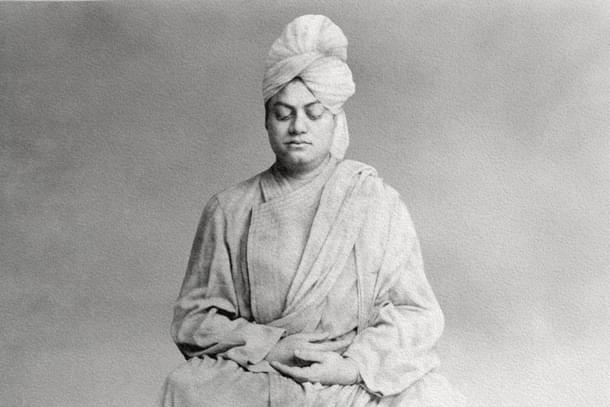
Compassion becomes a determined output of a specific metaphysical realization that now has an ontological correlate. Swami Vivekananda put it forcefully in his lecture 'Spirit and the Influence of Vedanta' delivered at Boston in the year 1896:
Thou art one with this Universal Being, and, as such, every soul that exists is your soul; and every body that exists is your body; and in hurting anyone, you hurt yourself, in loving anyone, you love yourself. As soon as a current of hatred is thrown outside, whomsoever else it hurts, it also hurts yourself; and if love comes out from you, it is bound to come back to you. For I am the universe; this universe is my body.
This framework aligns beautifully with the ‘all-or-nothing’ nature of the physics. The freedom (moksha) offered by Advaita is not a partial, compatibilist freedom to choose between A and B. It is a complete and total liberation from the illusion of being a separate chooser in the first place. This mirrors the radical, uncompromising choices presented by Vieira et al. There is no middle ground. Whether it is superdeterminism or non-local holism all the way, Advaita makes the highest ethical actions possible in any situation mandatory for the individual. Empathy and compassion are not arbitrary choices, but the natural expression of a mind that has begun to perceive the fundamental unity of existence.
Journal Reference: Vieira, C., Ramanathan, R. & Cabello, A. Test of the physical significance of Bell non-locality. Nature Communications, 16, 4390 (2025). https://doi.org/10.1038/s41467-025-59247-7





